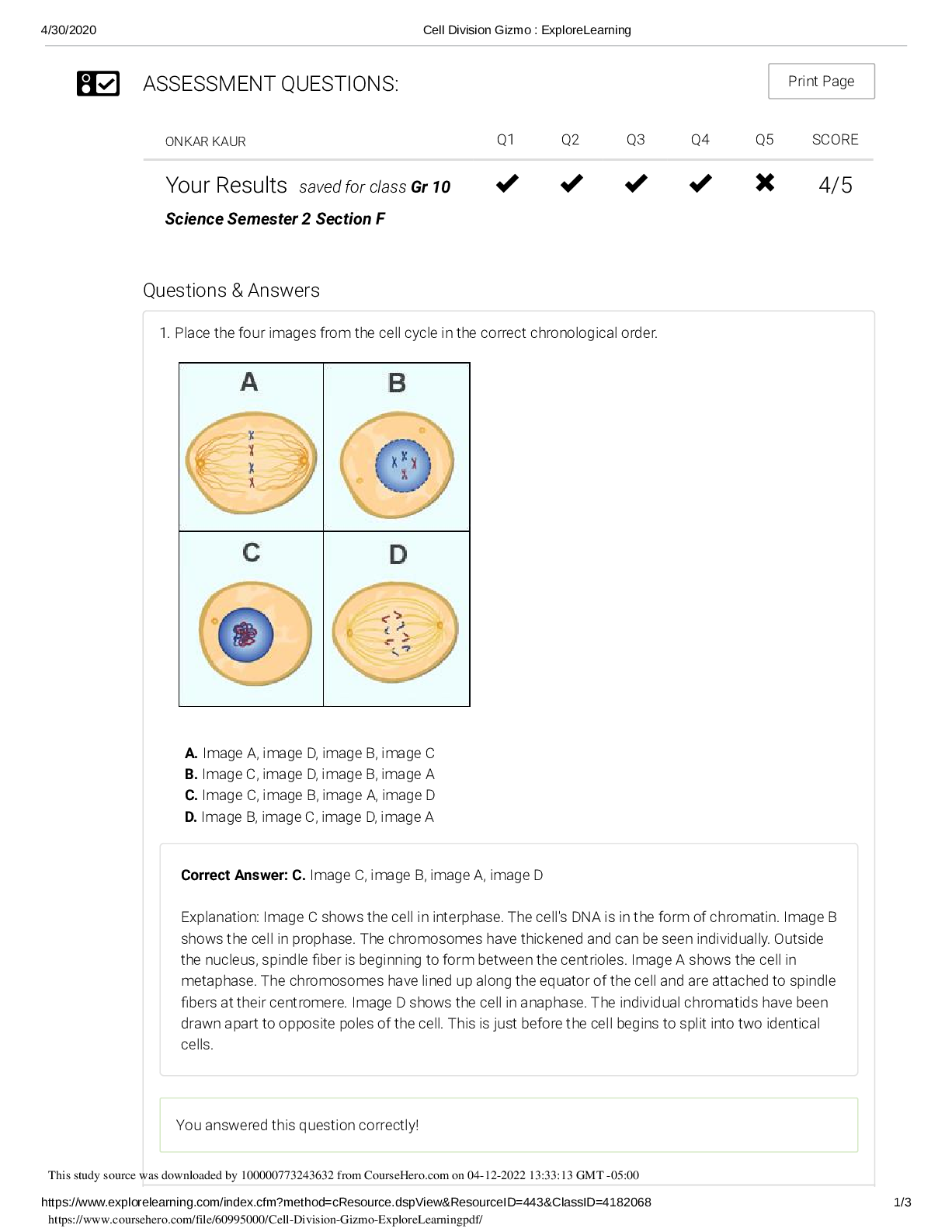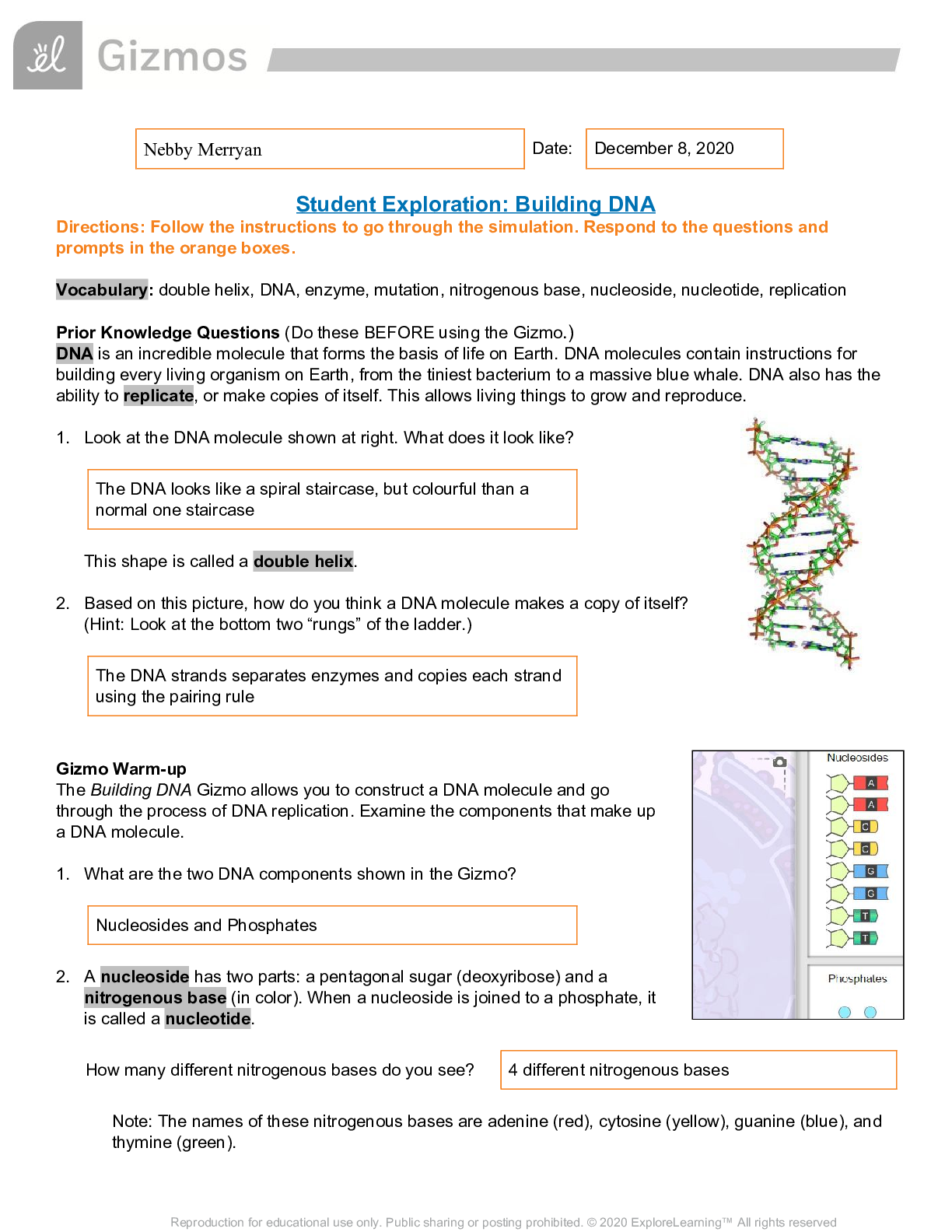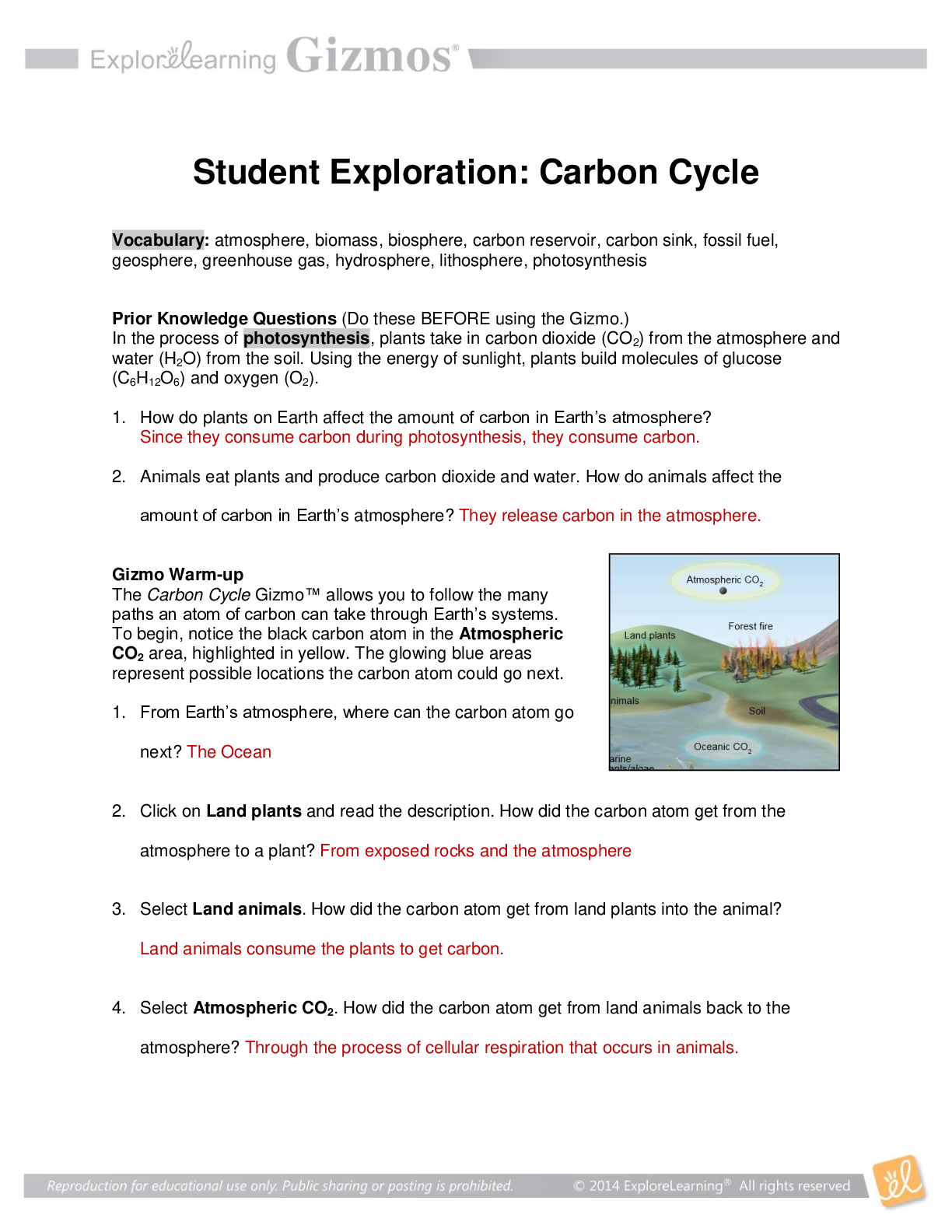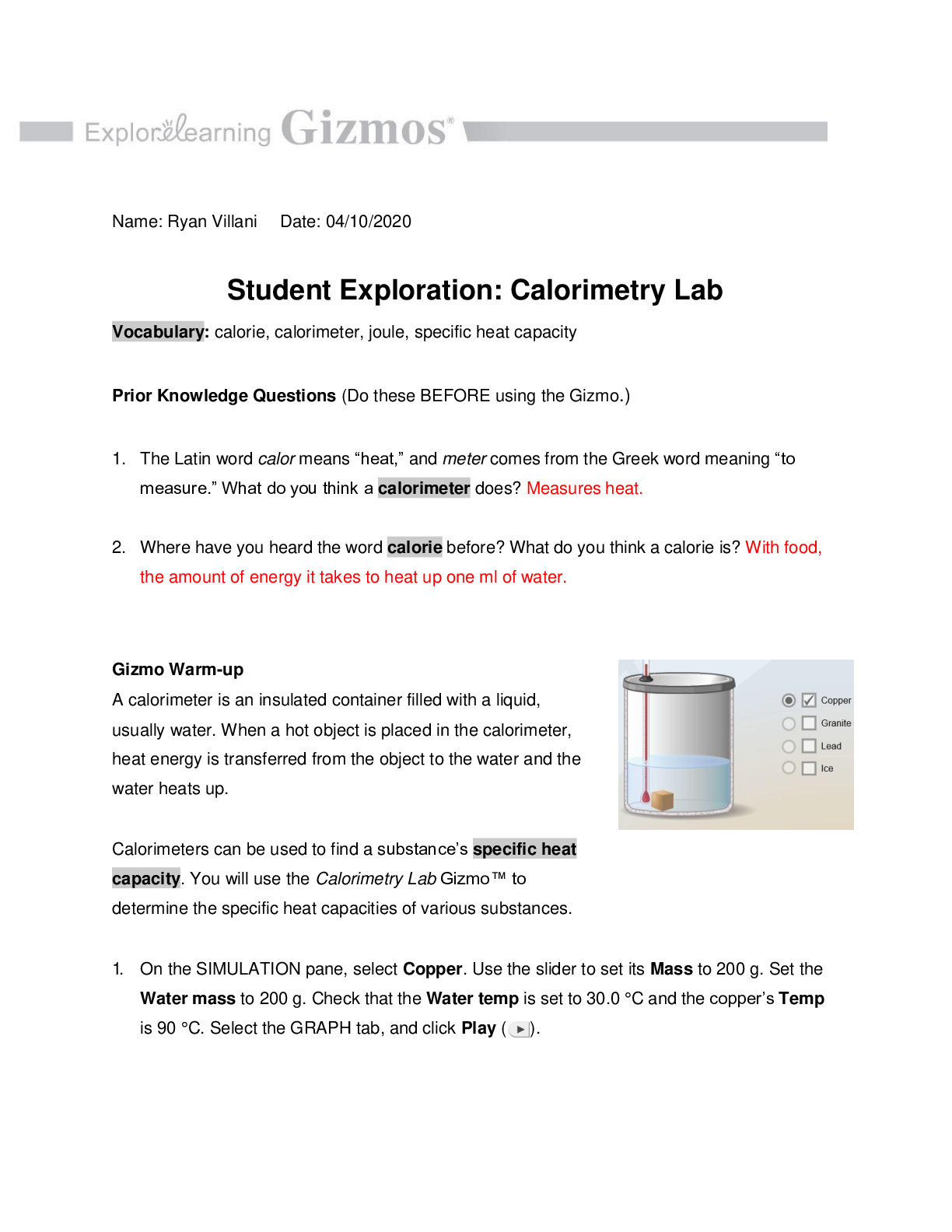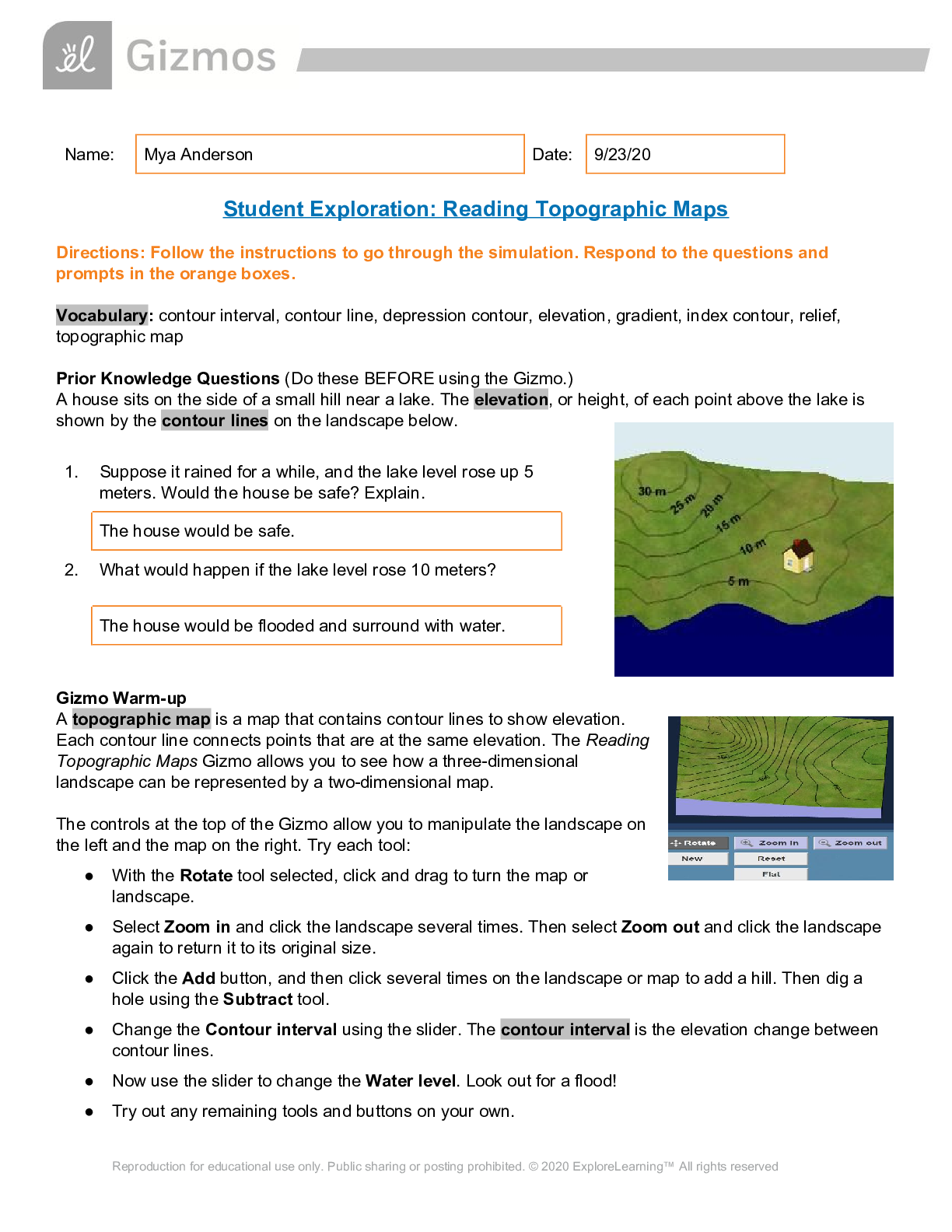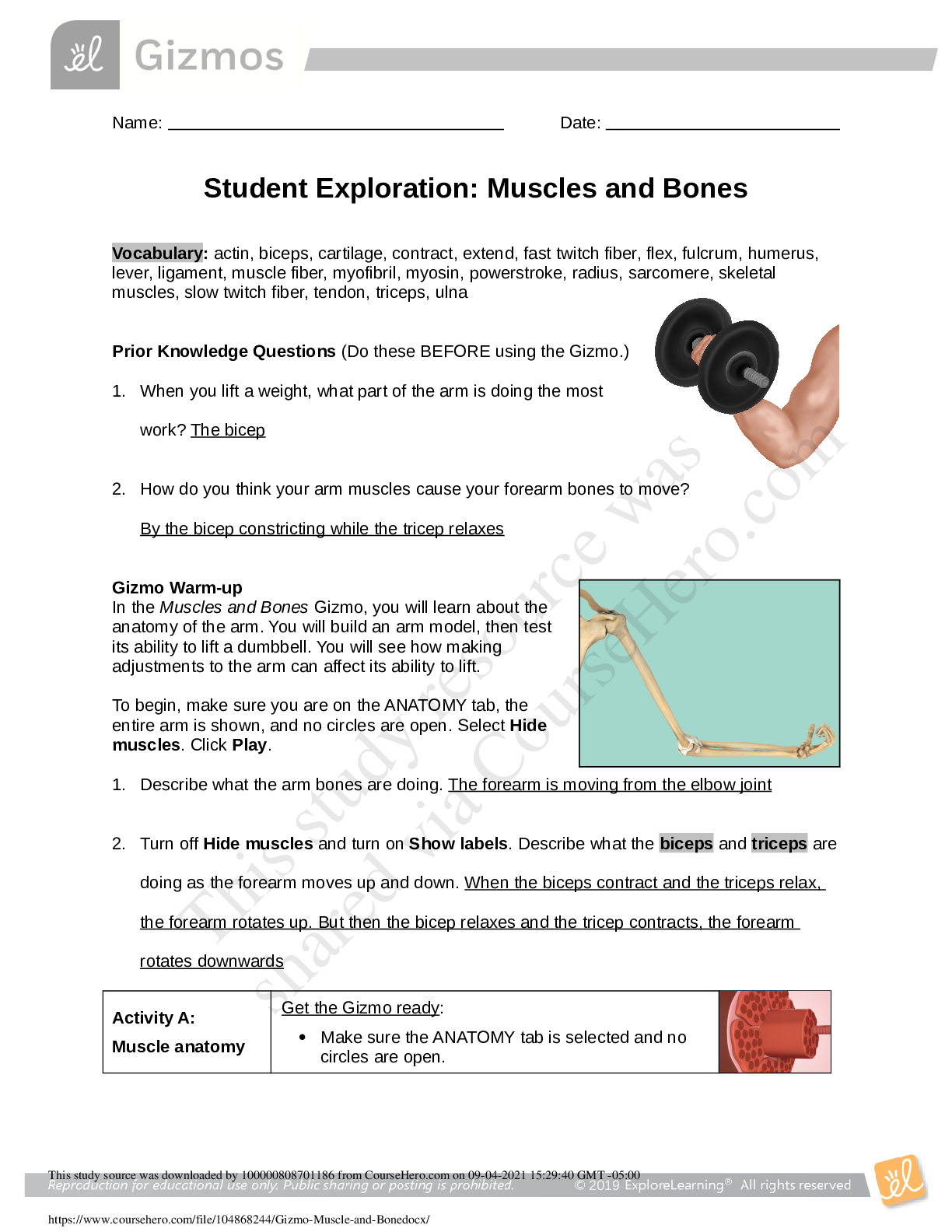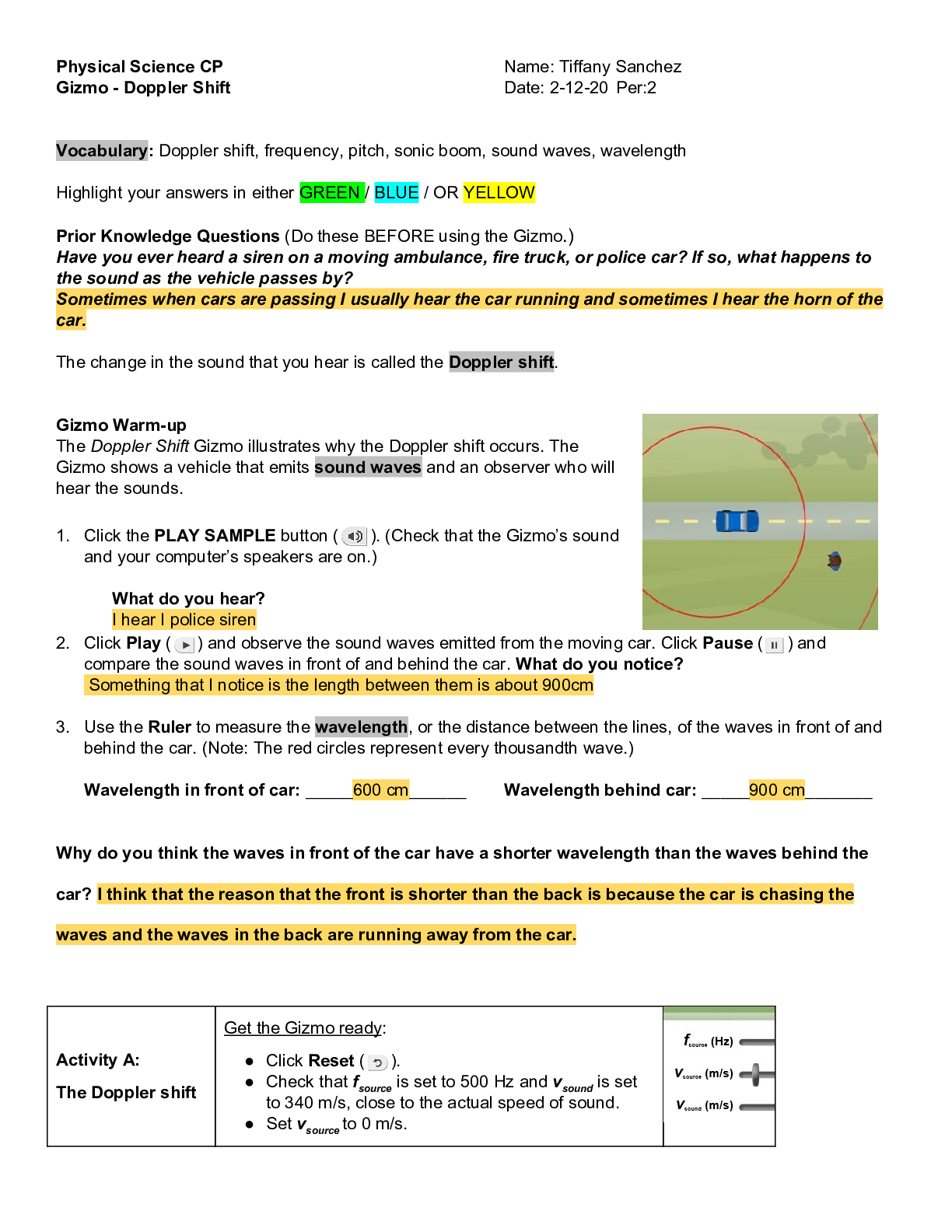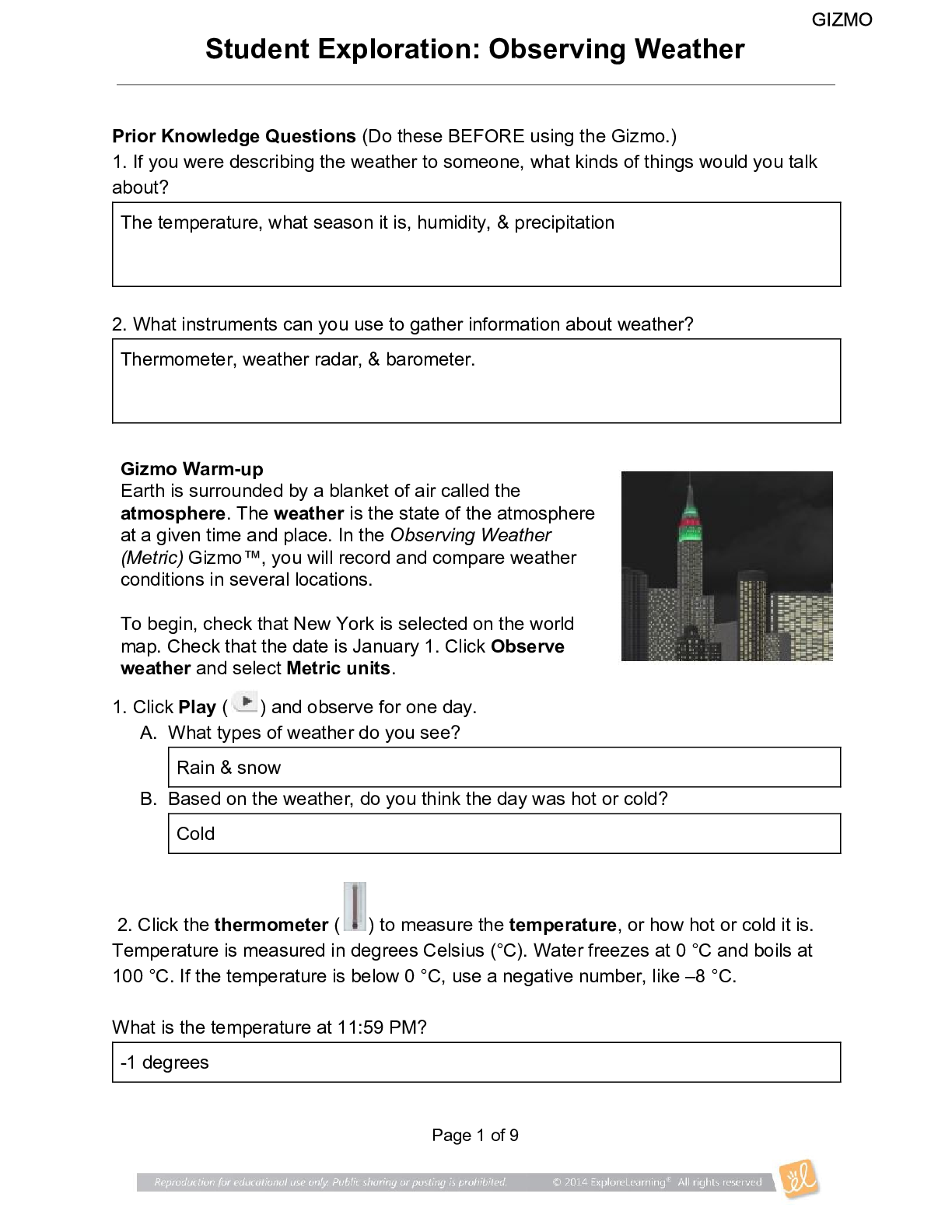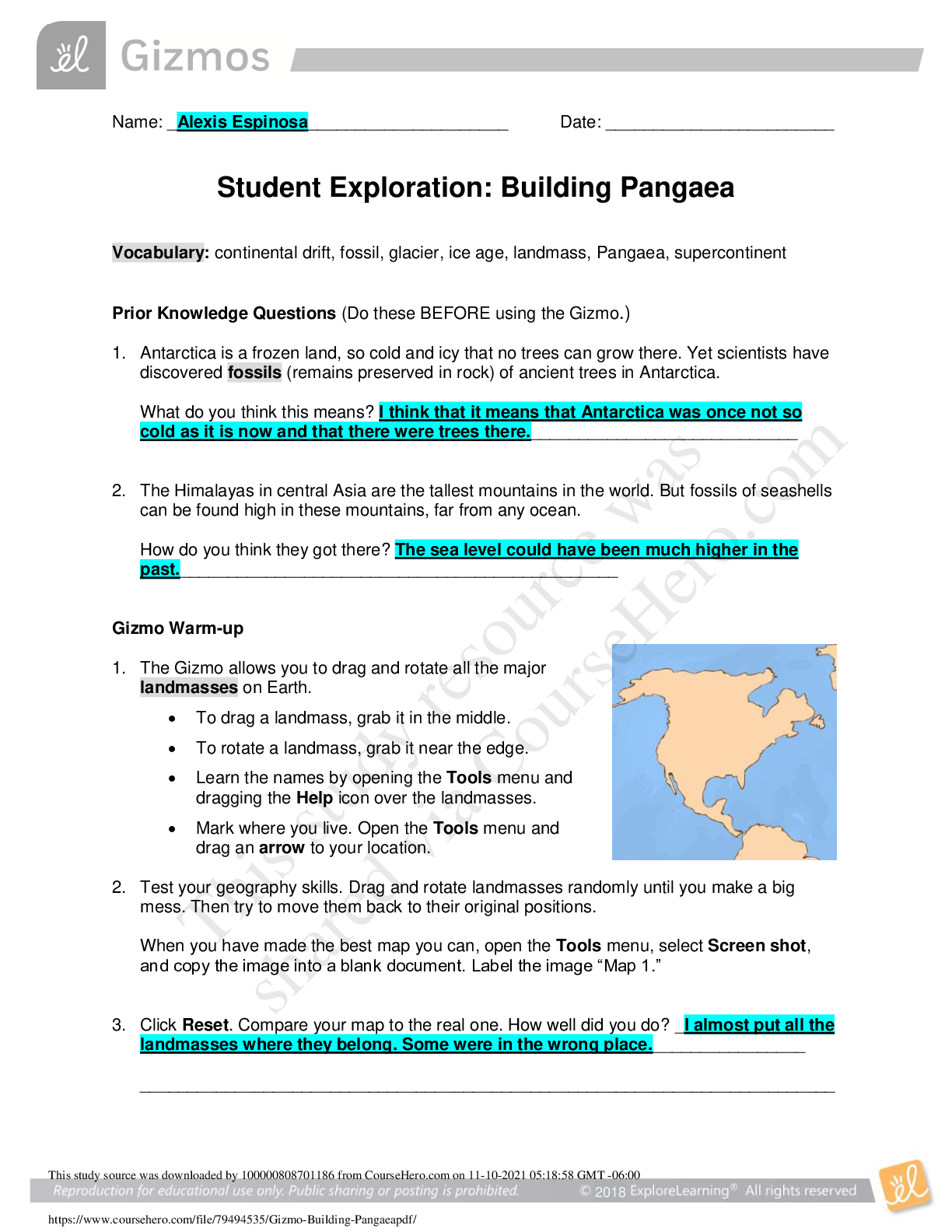GIZMOS-Identifying Nutrients_Mystery (DJ).docx. Graded A+.
Document Content and Description Below
Have you ever wondered what is in your food? Scientists use a variety of tests to determine the nutritional content of food. You will learn four of those tests with the Identifying Nutrients Gizmo. ... Directions: Follow the instructions to go through the simulation. Respond to the questions and prompts in the orange boxes. Gizmo Introduction: Most food is composed of three types of molecules: carbohydrates, proteins, and lipids. - Carbohydrates such as starches and sugars are a major source of energy. Simple sugars are found in sweets and fruits. Starches are found in potatoes, cereal, pasta, flour, and other plant products. - Proteins are used in body structures such as muscles, skin, and hair. Rich sources of proteins include meats, dairy products, and beans. - Lipids (fats and oils) are used for energy, insulation, and as an essential building block of cells. Meats, dairy products, and oily plants such as olives are rich in lipids. Substance Does this contain carbohydrate, lipid, protein, or none? Butter lipids Oranges carbs Corn or potatoes carbs Egg whites protein Water n/a Activity A: (~5 minutes) Identifying nutrients Get the Gizmo ready: ● Click Reset. ● Drag Sample A into the Food sample holder. Question: How do you test for carbohydrates, proteins, and lipids? 1. Test: The Benedict test is a test for monosaccharides; simple sugars like glucose or fructose (fruit sugar). In contact with monosaccharides, the Benedict solution turns from blue to green to orange. Does Sample A contain monosaccharides? yes Note: Disaccharides such as sucrose (table sugar) and lactose (milk sugar) are more complex than monosaccharides. The Benedict test does not detect disaccharides directly. 2. Test: The Lugol test uses iodine to test for starch, a polysaccharide (complex sugar). Iodine turns dark purple in the presence of starch. Under Lugol test, click Test. Does sample A contain starch? no 3. Test: The Biuret test uses a solution of potassium hydroxide (KOH) and copper sulfate (CuSO4) to test for protein. The Biuret solution turns purple when proteins are present [Show More]
Last updated: 3 years ago
Preview 1 out of 3 pages

Buy this document to get the full access instantly
Instant Download Access after purchase
Buy NowInstant download
We Accept:

Reviews( 0 )
$5.00
Can't find what you want? Try our AI powered Search
Document information
Connected school, study & course
About the document
Uploaded On
Mar 29, 2022
Number of pages
3
Written in
All
Additional information
This document has been written for:
Uploaded
Mar 29, 2022
Downloads
0
Views
148




